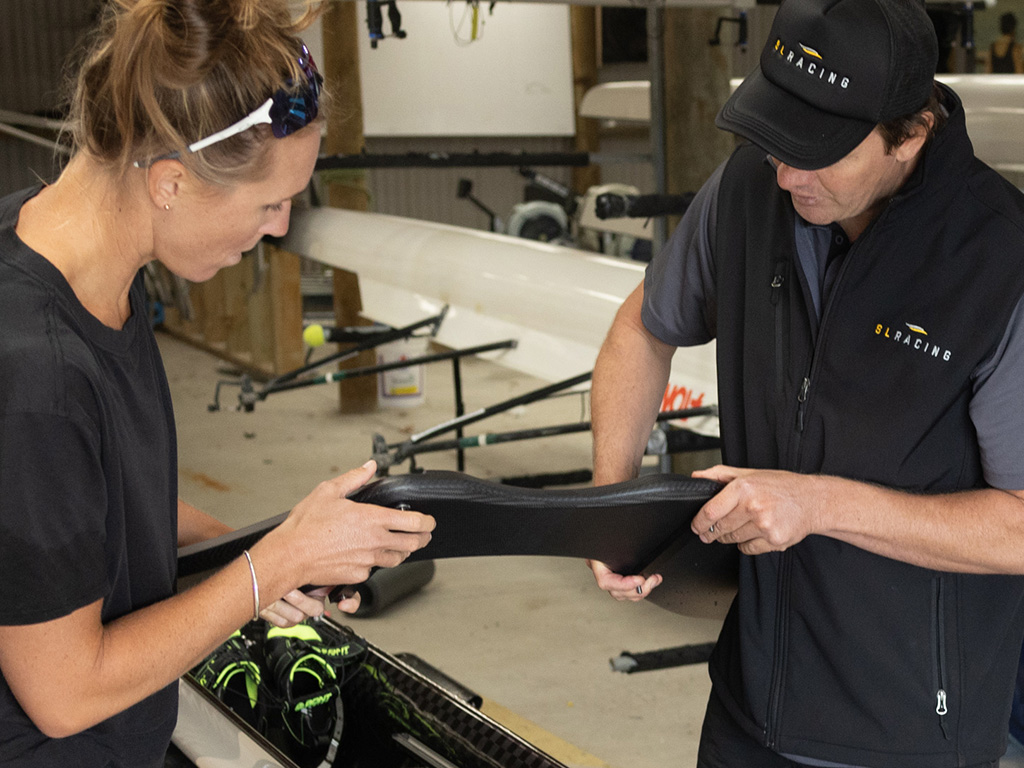Welcome to our first look into the world of boats, rigging and everything you use to get yourself down the rowing course quicker. In this regular article we’ll try to get you thinking about the tools of your trade, providing a little bit of insight from the brains of a boat builder. In this first edition we’ll start with the basics, covering off all the little bits of the boat and how they make up the whole. Here’s our anatomy of a rowing boat from stern to bow and everything in between.
The rudder:
We all know it steers the boat, but have you thought about it any further than that? Do you put it at the extreme back of the boat to give yourself more leverage in turning? Do you sneak it right behind the fin for less drag? Do you cross your wires, or keep them straight? This little tool for turning often doesn’t get much thought, but it plays a huge part in your race. We tend to cross our wires to give a tighter steering rope, and keep our rudders streamlined in behind the fin. As a rower and coxswain, just remember your boat will turn from where your rudder is – the back of the boat will turn before the bow, so you almost have to turn before you need to. Are you river racing? Think about putting on a bigger rudder to take your turns easier!
The fin:
If the rudder is all about you turning, the fin keeps you on the straight and narrow. The larger the fin, the more surface area you have holding the boat against sideways movement. If you had no fin, you’d slip and slide around with every imbalanced stroke, puff of wind or slight change in current. If you have too much fin, you’ll slow the boat down by creating more drag under the water. Carbon is a great lightweight option, but tricky to replace if your fin gets damaged, so stainless steel provides a much more durable solution. Boat not going straight? Check your fin for kinks and bends.
The hull:
Back in the day hulls were lovingly crafted from wood, but nowadays we use carbon fibre and a honey comb core to create a tough, lightweight and consistent shape. With so many outside variables on a rowing course – wind, the rower, waves – choosing a hull shape is a compromise between comfort and speed. The wider the boat, the easier it is to balance, and therefore the easier it is to row. The narrower the boat, the less surface area it will have in contact with the water, making it theoretically quicker. However, a shaky, unbalanced boat is a slow boat, so we have to find our perfect middle ground. Very basically, a shorter boat will be easier to get up to speed, but a longer boat will have a higher possible max speed. 2km’s is the golden number for racing, so most boats are designed to get a rower of a certain weight average across 2km’s the quickest. Know your boat length and how it runs and you’ll be able to craft your raceplan to suit it.


